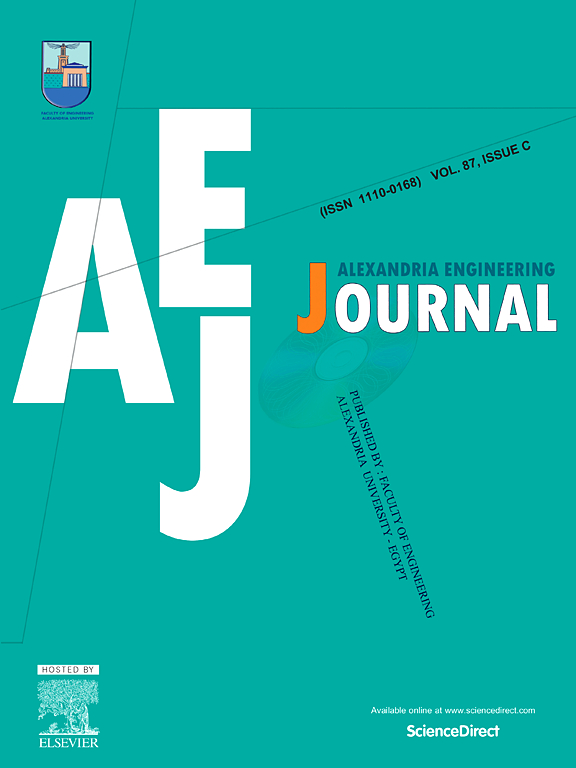Nonlinear analysis of reinforced concrete slab-on-girder bridges with and without intermediate diaphragms
IF 6.8
2区 工程技术
Q1 ENGINEERING, MULTIDISCIPLINARY
引用次数: 0
Abstract
This paper presents results obtained from a nonlinear finite element analysis of slab-on-girder reinforced concrete bridges. Nonlinearity included: concrete cracking, behavior of concrete in compression, and reinforcement yield. Twenty-seven bridges were analyzed under truck loads based on the Egyptian Code (ECP 201–2017) and the self-weight of the bridge structural elements. This study included three groups: Group 1 with variable spans (L = 15 m, 20 m, and 24 m) and widths (W = 7 m, 10.5 m, and 14 m) to investigate the effect of the aspect ratio. Group 2 bridges with variable spans and girder spacing (S = 2.1 m, 2.625 m, and 3.5 m), while keeping the width constant at W = 10.5 m. Group 3 is similar to Group 1 but introduces one intermediate diaphragm placed at the bridge mid-span, in addition to two diaphragms located at the supports. The finite element model was calibrated using field tests found in the literature. Based on the parametric study, it was found that the presence of intermediate diaphragms, significantly enhances the transverse load distribution, thus reducing the bending moment on the longitudinal girders. The degree of enhancement increases as the bridge width increases. The Egyptian Code lacks an equation for the moment distribution factor, so an empirical equation was proposed to predict the moment distribution factors for the interior girder of slab-on-girder bridges under ECP truck loads.
有无中间隔板的钢筋混凝土梁板桥的非线性分析
本文介绍了钢筋混凝土板梁桥的非线性有限元分析结果。非线性包括:混凝土开裂,混凝土在压缩中的行为,和钢筋屈服。根据埃及规范(ECP 201-2017)和桥梁结构单元的自重,对27座桥梁进行了卡车荷载分析。本研究分为三组:第一组采用可变跨度(L = 15 m, 20 m和24 m)和宽度(W = 7 m, 10.5 m和14 m)来研究长径比的影响。组2为变跨度、变梁间距(S = 2.1 m、2.625 m、3.5 m),宽度W = 10.5 m不变的桥梁。第3组与第1组类似,但除了位于支座处的两个隔膜外,还在桥梁跨中引入了一个中间隔膜。使用文献中发现的现场测试对有限元模型进行校准。通过参数化分析,发现中间隔板的存在显著增强了横向荷载分布,从而减小了纵梁上的弯矩。增强程度随桥宽的增加而增加。由于埃及规范中缺乏弯矩分配系数的计算公式,因此提出了一个经验公式来预测ECP荷载作用下梁板桥内梁的弯矩分配系数。
本文章由计算机程序翻译,如有差异,请以英文原文为准。
求助全文
约1分钟内获得全文
求助全文
来源期刊

alexandria engineering journal
Engineering-General Engineering
CiteScore
11.20
自引率
4.40%
发文量
1015
审稿时长
43 days
期刊介绍:
Alexandria Engineering Journal is an international journal devoted to publishing high quality papers in the field of engineering and applied science. Alexandria Engineering Journal is cited in the Engineering Information Services (EIS) and the Chemical Abstracts (CA). The papers published in Alexandria Engineering Journal are grouped into five sections, according to the following classification:
• Mechanical, Production, Marine and Textile Engineering
• Electrical Engineering, Computer Science and Nuclear Engineering
• Civil and Architecture Engineering
• Chemical Engineering and Applied Sciences
• Environmental Engineering
 求助内容:
求助内容: 应助结果提醒方式:
应助结果提醒方式:


